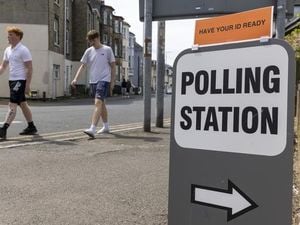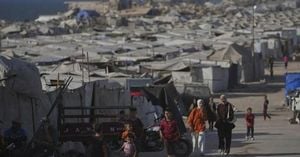The Iranian Rial has seen significant fluctuations recently, driven by both internal and external economic pressures. These shifts have raised concerns about the stability of the national currency, impacting everyday consumers and businesses alike.
The Rial's value has dramatically fluctuated, particularly against major foreign currencies like the US dollar, resulting from various factors including economic sanctions, inflation, and changes within the global oil market. According to reports, the currency has succumbed to depreciation, hitting record lows against the dollar, which has become increasingly burdensome for citizens and businesses reliant on imports.
The past few months have painted a stark picture for the Iranian economy. Increased inflation, estimated at around 50% annually, has compounded the depreciation of the Rial. Economic analysts suggest the currency's instability can be attributed to multiple sources, including government fiscal policies and geopolitical tensions impacting trade.
“The combination of sanctions and mismanagement has created perfect storm conditions for the Rial,” says Reza Farzin, an economic analyst at Tehran University. He adds, “Many citizens now find themselves unable to afford basic goods due to the continually rising prices.”
Reports indicate the Iranian government is faced with mounting frustration from the public, which has led to protests demanding economic reform. The deterioration of the Rial's purchasing power has particularly affected lower-income families, who struggle to afford essentials.
On the policy front, the Iranian government and Central Bank have attempted to stabilize the situation by implementing various measures, including currency interventions and floating exchange rates. Still, these efforts have yielded mixed results. Decrees aimed at controlling prices have been criticized for being ineffective and serving only to temporarily mask the underlying issues.
“While the government claims to be taking action, it has not yet translated to meaningful change for the average citizen,” notes Fatemeh Mohammadi, who runs a small clothing shop in Tehran. “Every time I try to restock, the prices have already gone up.”
The recent trend worsened with the implementation of new US sanctions targeting Iran's banking sector, which have significantly escalated exchange rate instability. The national currency's decline accelerated during this period, stirring fears of hyperinflation among economists.
According to the Iranian Labor News Agency, many businesses have been forced to either close or shift focus to local production due to import costs stemming from the weakening Rial. This shift aims to mitigate losses but also reveals the fragility of the manufacturing sector reliant on imported raw materials.
“We can no longer depend on imports,” states Amir Hosseini, owner of a manufacturing firm specializing in electronics. “Local production is our only option, though it is not as efficient or cost-effective.”
Consumers have also reacted to the Rial's fluctuations by changing their buying habits. Many are opting for foreign currency as a safeguard against inflation, which has entered the everyday transactions of purchasing goods. The preference for the dollar or euro has created black markets where currency can be traded at exorbitantly high rates compared to official channels.
The struggle to control the exchange rate has drawn attention from international observers. Recent meetings between Iranian officials and foreign diplomats aim to navigate these economic challenges, though significant progress remains elusive. Potential negotiations over sanctions have been hampered by the complexity of balancing internal political dynamics with external pressures.
“There is cautious optimism, with potential discussions indicating both sides are willing to engage,” comments Samira Kashani, an international relations expert. “But until there are tangible results, the Rial will likely continue to be vulnerable.”
Despite the dire economic forecasts, Iranians are exhibiting resourcefulness. Many have turned to cryptocurrency as a hedge against the Rial's volatility, signaling a cultural shift as technology gains ground amid economic uncertainty. The use of digital currency highlights how adaptation is becoming increasingly necessary as the traditional financial system falters.
“People are becoming more educated about digital currencies, and it’s offering us alternatives when the Rial fails us,” says Mostafa Javid, who has invested his savings in Bitcoin. “It’s not perfect, but it feels safer.”
Looking forward, the resolution of the Iranian Rial's fluctuations is tied closely to the broader geopolitical climate and the governance strategies adopted by leaders. The government is urged to address the root causes of currency instability through not only economic reforms but also improved transparency and governance practices.
“For the Rial to regain its footing, the government must prioritize the needs of its citizens and stabilize the economy,” asserts economist Reza. “Otherwise, it’s only going to get tougher for everyone.”
The state of the Iranian Rial serves as both a reflection of the country's internal strife and external pressures. Without significant reform and strategic focus on the underlying issues affecting its value, the currency's future remains uncertain, leaving many citizens grappling with the daily realities of inflation and scarcity.



